Totten Crew – Assigned 754th Squadron – March 28, 1945

Sitting: David Totten – P, Walter Stynetski – CP, Lewis Anderson – N, Mike Lavonsky – B
Crashed shortly after takeoff April 14, 1945 – AR45-04-14-519
| Rank | Name | Serial # | Pos | Date | Status | Notes |
|---|---|---|---|---|---|---|
| 2Lt | David R Totten | 02059134 | Pilot | 14-Apr-45 | KIA | Raleigh County, WV |
| F/O | Walter J Stynetski | T63161 | Co-pilot | Apr-45 | FEH | Flying at the End of Hostilities |
| 2Lt | Lewis L Anderson | 02072401 | Navigator | 14-Apr-45 | KIA | Cambridge American Cemetery |
| F/O | Michael C Lavonsky, Jr | T134426 | Bombardier | 14-Apr-45 | WIA | Removed from Flying Status |
| Sgt | Charles E May III | 12226449 | Radio Operator | 14-Apr-45 | KIA | Cambridge American Cemetery |
| Sgt | Thomas F Seale | 34810167 | Flight Engineer | 14-Apr-45 | KIA | Shelby County, Al |
| Sgt | Joseph A Galterio | 33921530 | Aerial Gunner | Apr-45 | FEH | Flying at the End of Hostilities |
| Sgt | Don C Neville | 34924123 | Aerial Gunner | 14-Apr-45 | WIA | Removed from Flying Status |
| Sgt | Donald H Orgain | 14153660 | Armorer-Gunner | Apr-45 | FEH | Flying at the End of Hostilities |
| Sgt | Charles A Nystrom | 31378477 | Aerial Gunner | Apr-45 | FEH | Flying at the End of Hostilities |
David Totten’s crew was on base for just over two weeks prior to their crash in Hookem Cow. Their first mission three days before their ill-fated flight was an uneventful mission to an Oil Refinery at Regensburg. On the 14th of April, the Group was being sent to bomb a German “Fortress” at Pointe de Grave in France, each Liberator carrying four 2000 pound General Purpose bombs. In a letter written to David Totten’s parents six weeks after the accident, Walter Stynetski noted that, “because I did not have the experience, another co-pilot, who had 24 missions went in my place…. It was a long flight so the complete crew did not go. From our crew were David, Anderson, Lavonsky, Seale, May and Neville. Nystrom was also on the ship, but just before take-off, David told him to get out” The “co-pilot with 24 missions” was 1Lt Joseph J. Szoke. Assigned as an individual replacement in October 1944, he was acting as Instructor Pilot for this new crew on this date.
Take off was in darkness, and very shortly after the aircraft gained flight, waist gunner Don Neville noticed that the number 2 engine was “torching”. Bombardier, Michael Lavonsky (later changing his surname to Laine) was also in the waist and just as he looked out at the engine, the plane tumbled to the ground. Only Lavonsky and Neville survived.
DESCRIPTION OF ACCIDENT
The plane was taking off on a combat mission at night and under poor visibility conditions. Actual visibility at take-off time was unknown, probably somewhere between 180 yards and 300 yards the observations at 0500 and 0600. One of the survivors seems to think the number two engine was on fire soon after take-off. As plane hit the ground in a flying attitude, the wing section and engines caught fire completely destroying the aircraft. If the engine was on fire this may have distracted the pilot enough that he crashed. He was on instruments at time of crash.
Immediate Cause: Plane crashed under poor visibility conditions soon after take-off.
Underlying Cause: Possibly No. 2 engine on fire distracted pilot enough that he crashed.
Responsibility: 100% Unknown
Recommendations: None
Missions
| Date | Target | 458th Msn | Pilot Msn | Serial | RCL | Sqdn | A/C Msn | A/C Name | Comments |
|---|---|---|---|---|---|---|---|---|---|
| 11-Apr-45 | REGENSBURG | 224 | 1 | 44-40298 | E | Z5 | 56 | THE SHACK | |
| 14-Apr-45 | POINTE DE GRAVE | 225 | 2 | 42-95120 | M | Z5 | 92 | HOOKEM COW / BETTY | Crash on Takeoff Sta 123 |
2Lt David R. Totten
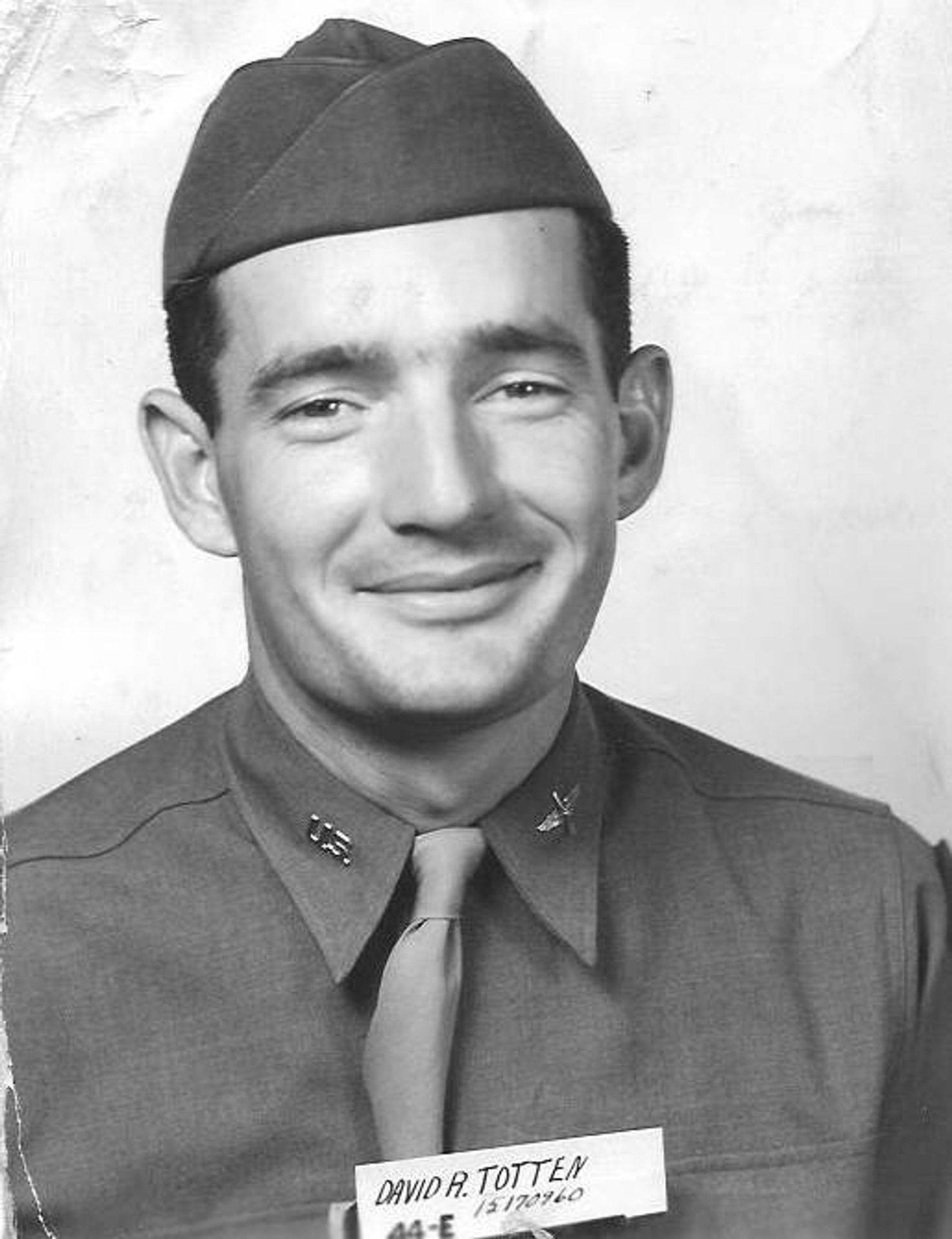
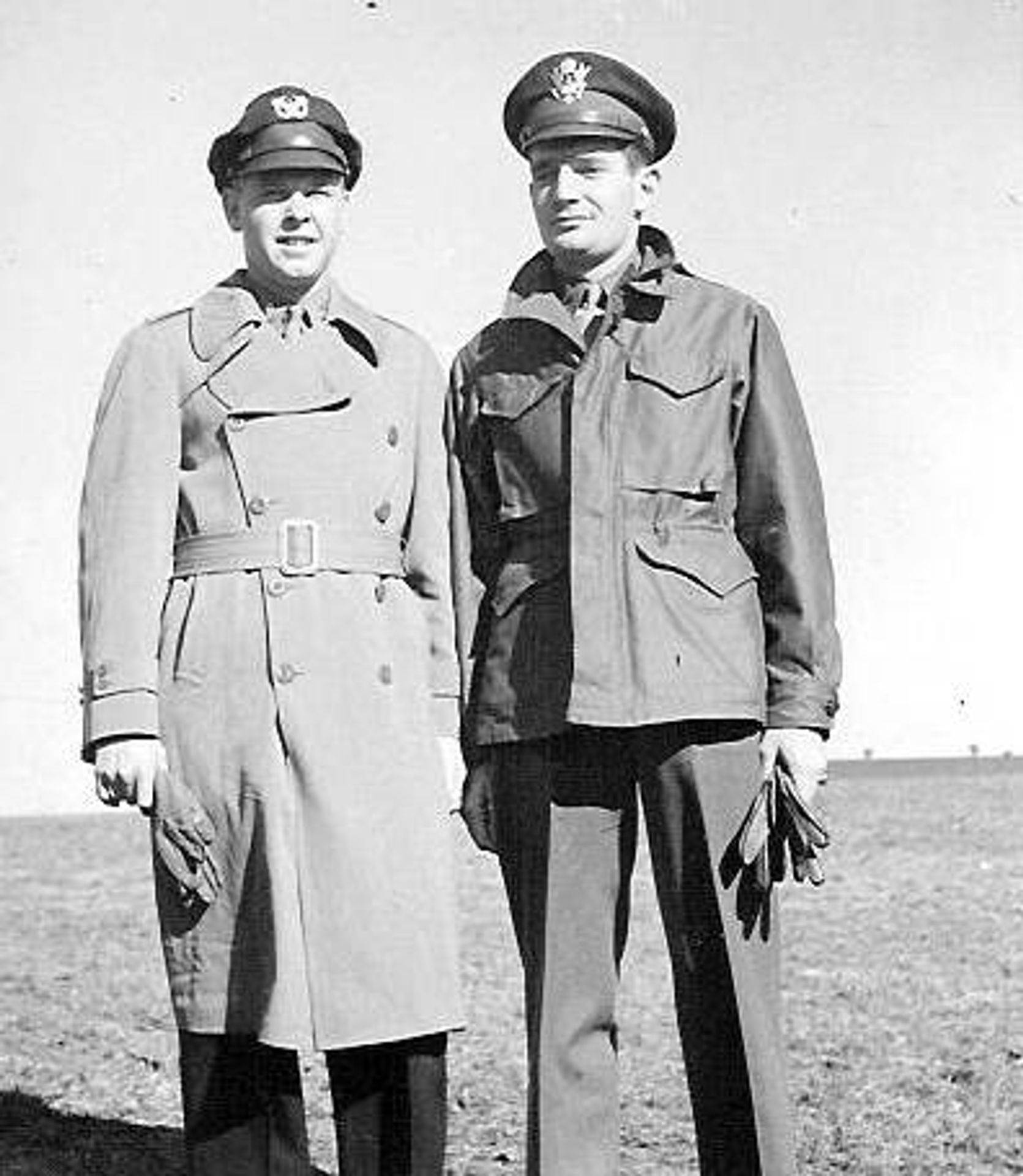
As an Aviation Cadet (left) and with his bombardier, Michael Lavonsky

David Totten (right) with an unknown officer
(Photos: Missy Craddock)
Back from a practice mission…
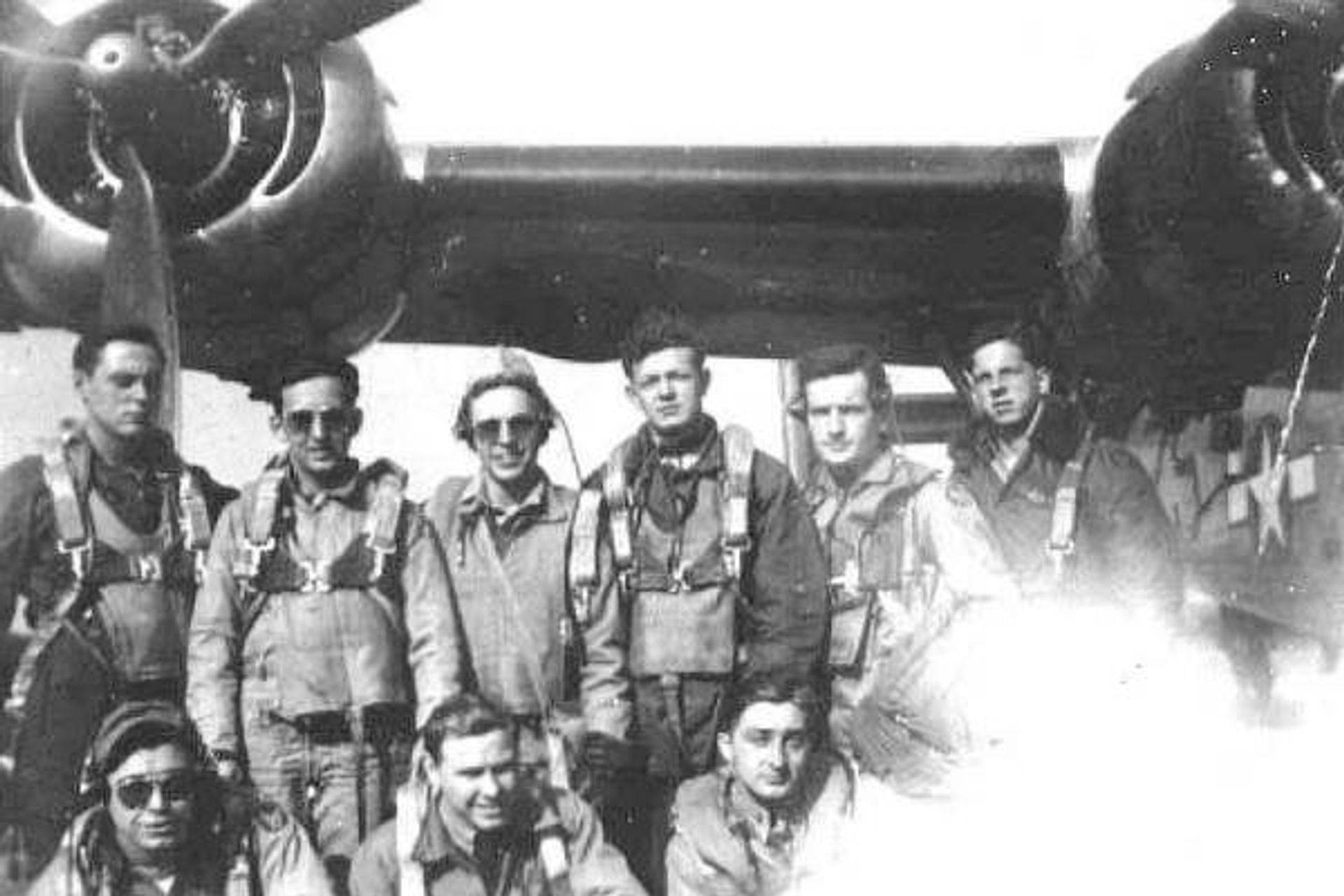
1Lt Joseph J. Szoke
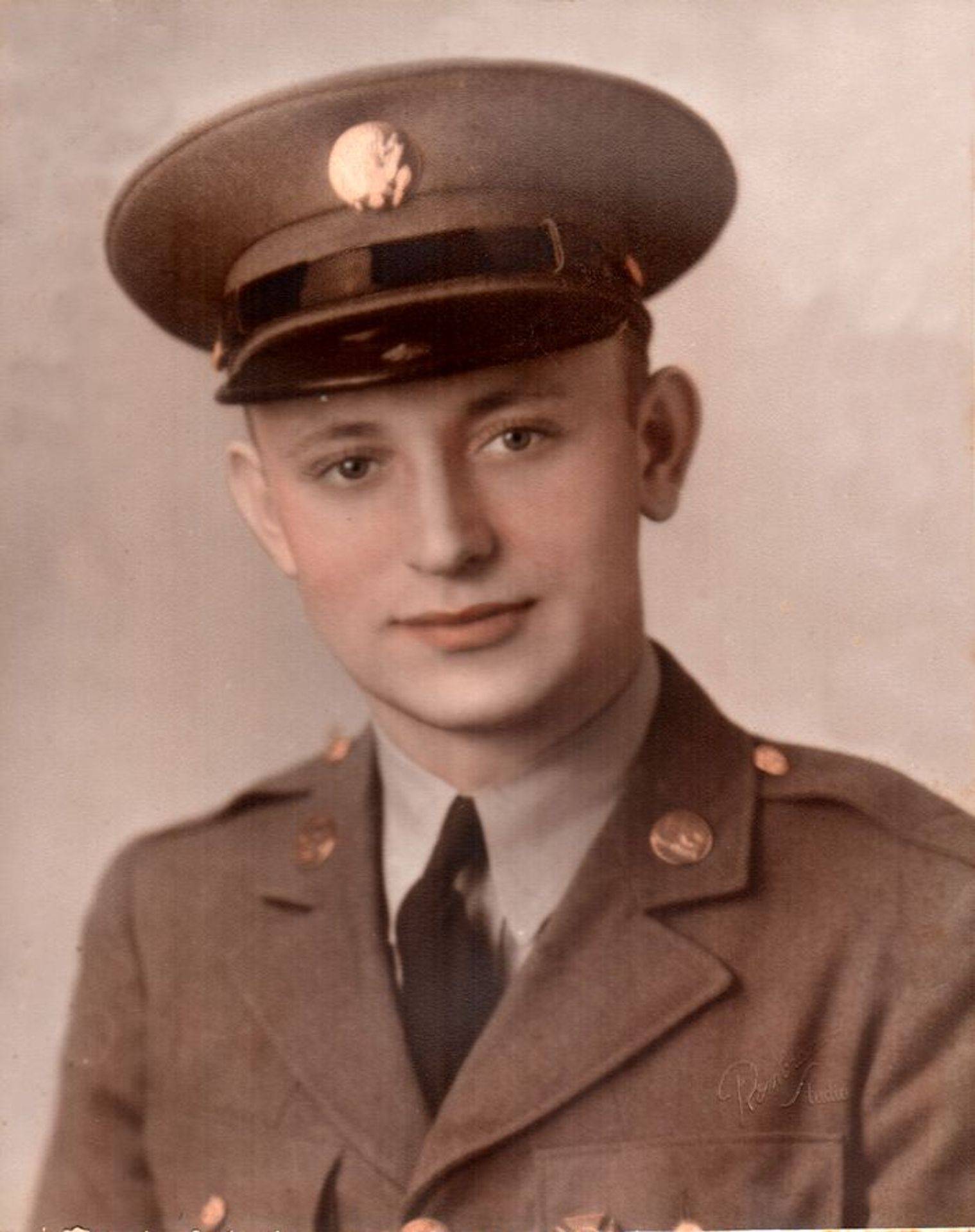
B-24H-25-FO 42-95120 J3 M Hookem Cow /Betty / Stinky
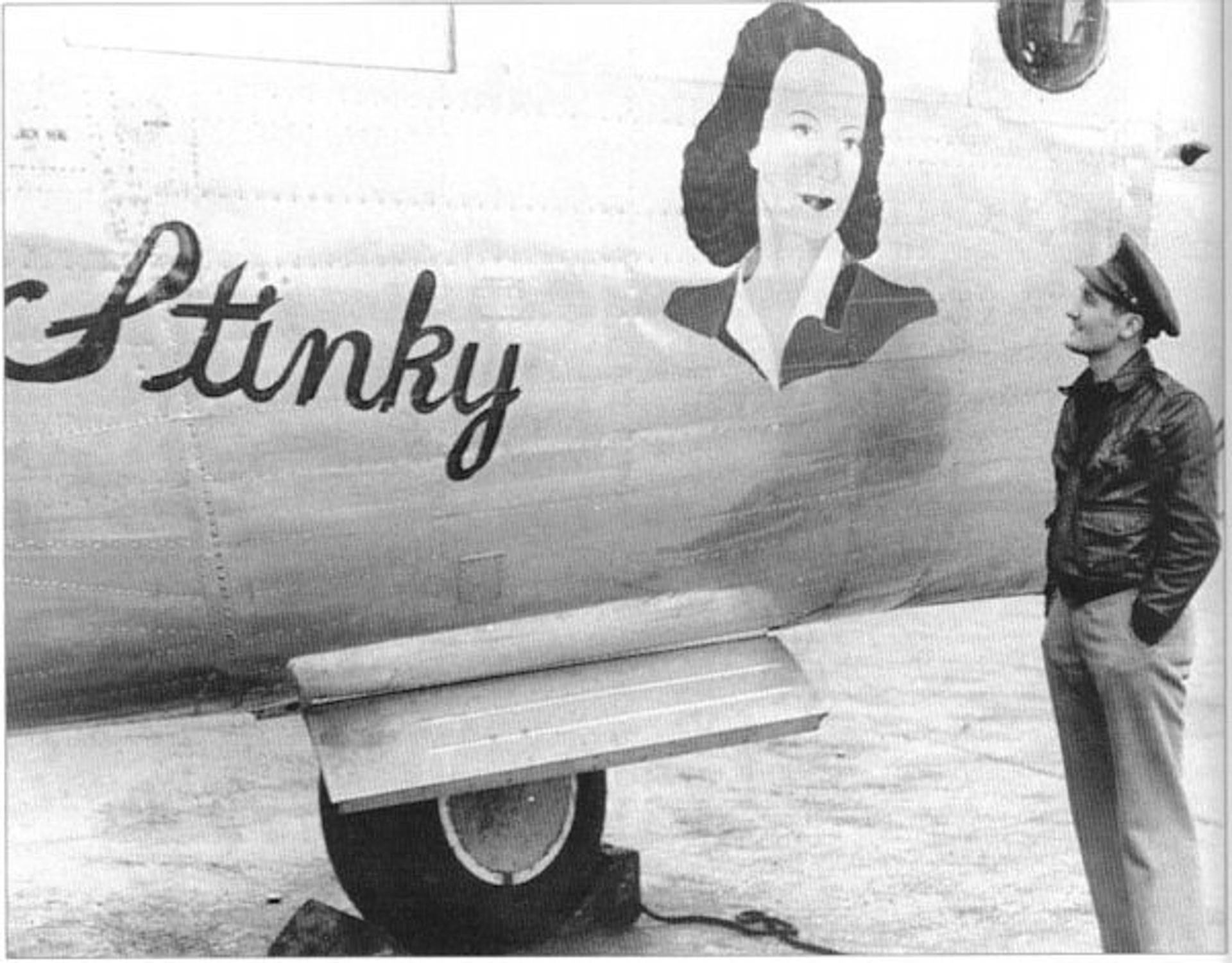
Capt John Ollum, 755BS Operations Officer, named the aircraft with an affectionate reference to his wife

Betty, victim of a taxiing accident, May 27, 1944

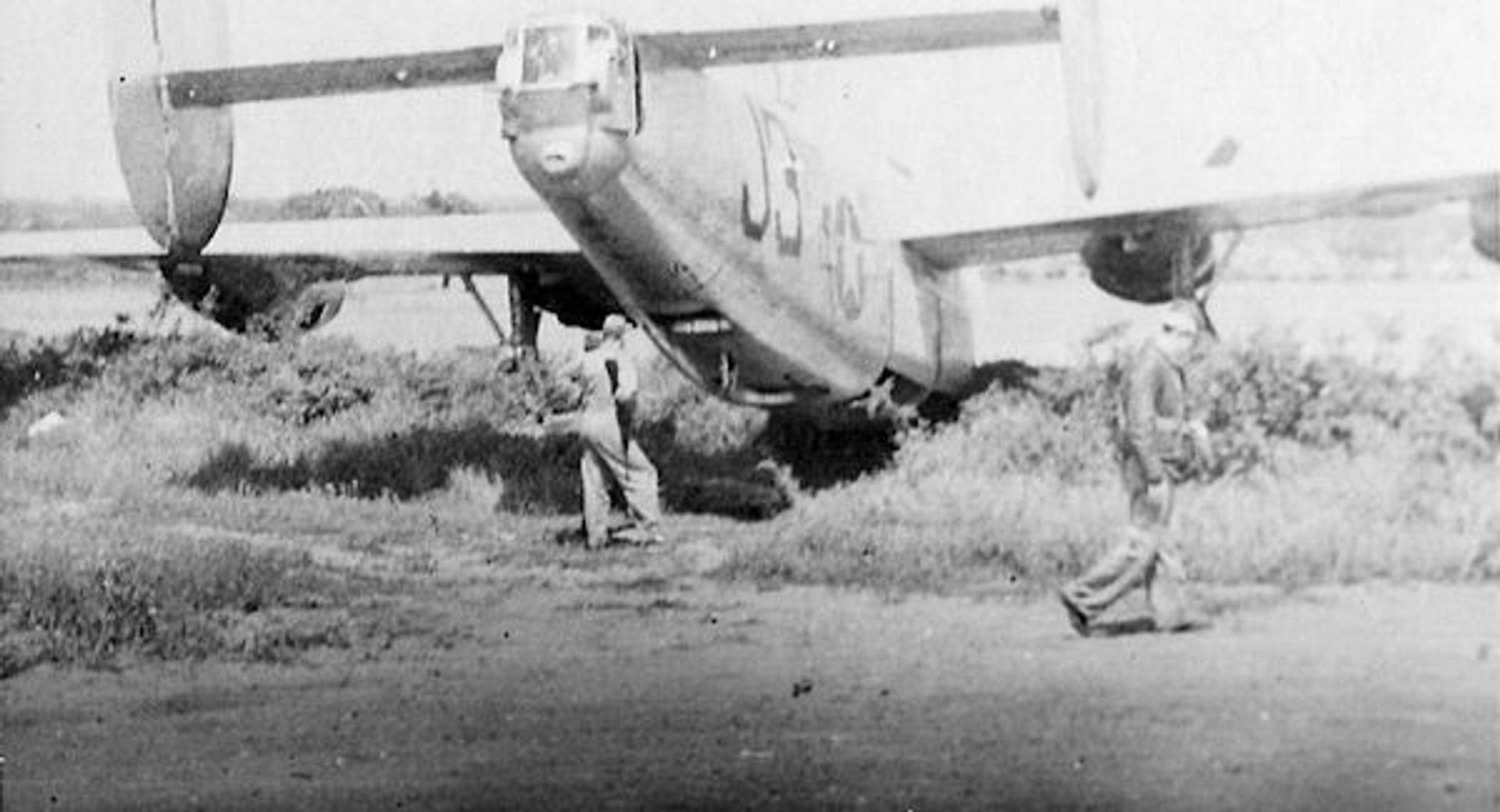

Courtesy: Mike Bailey
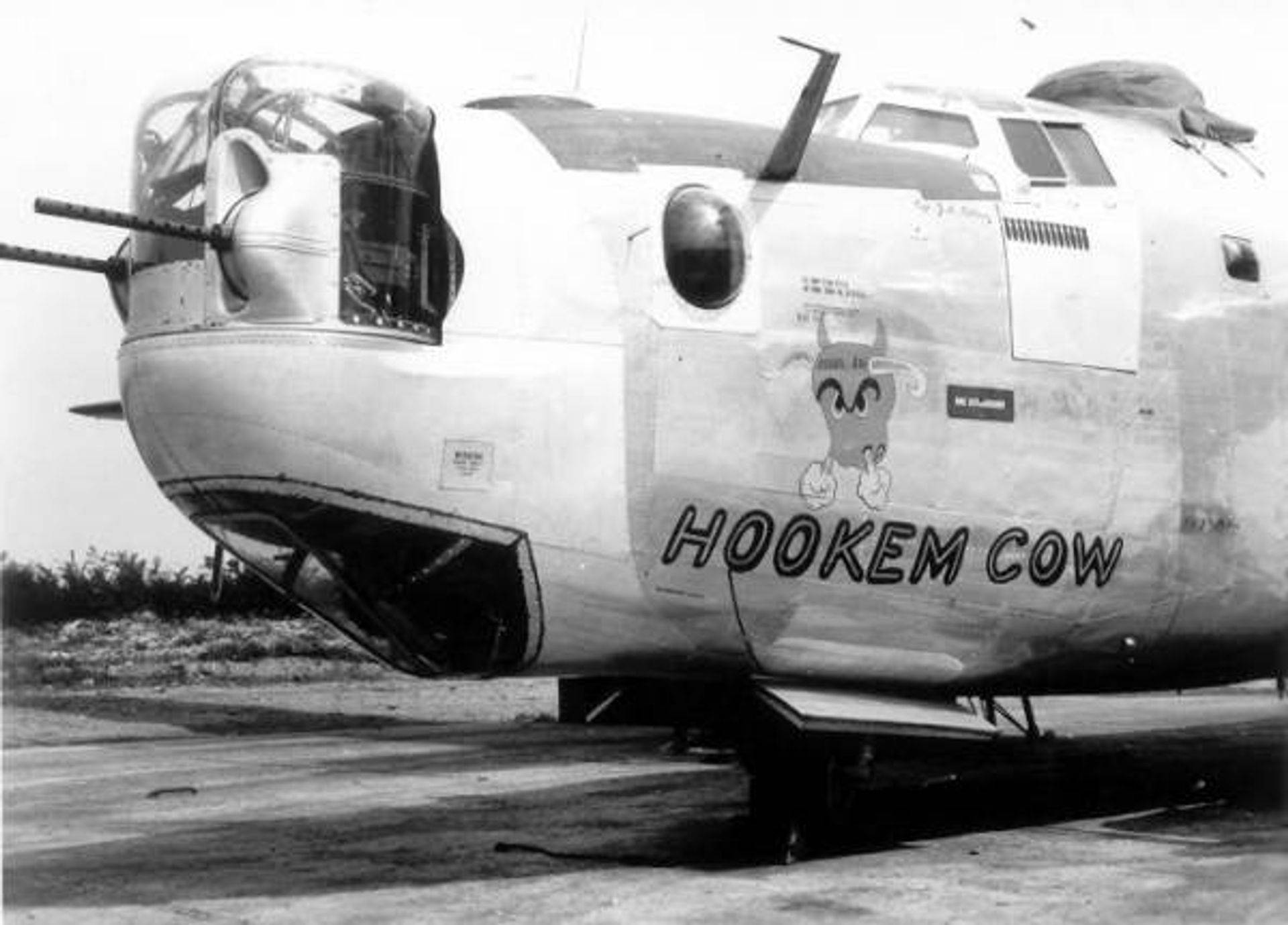

M/Sgt McGinn, Crew Chief
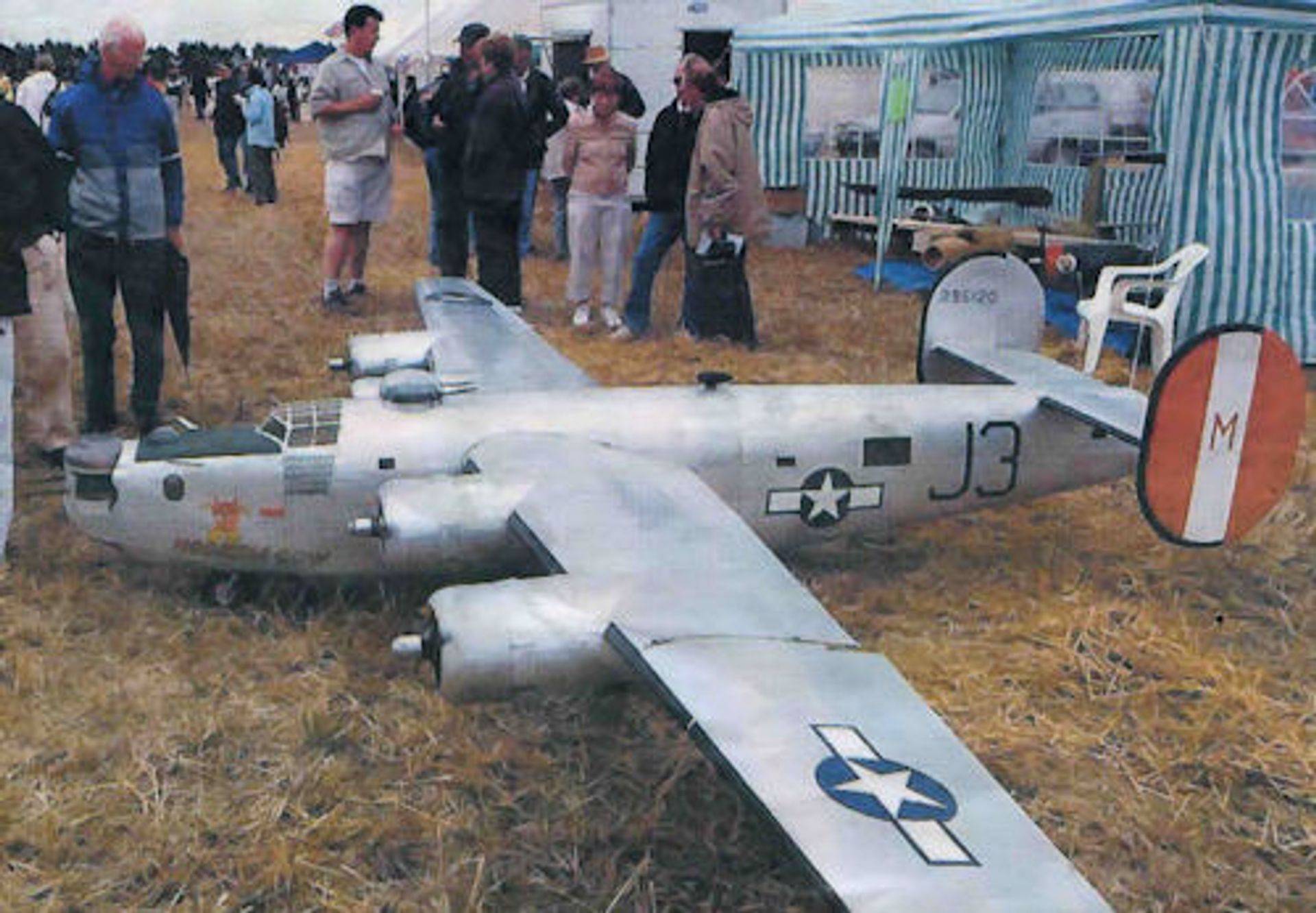

John Deacon’s 1/6 scale radio controlled Hookem Cow

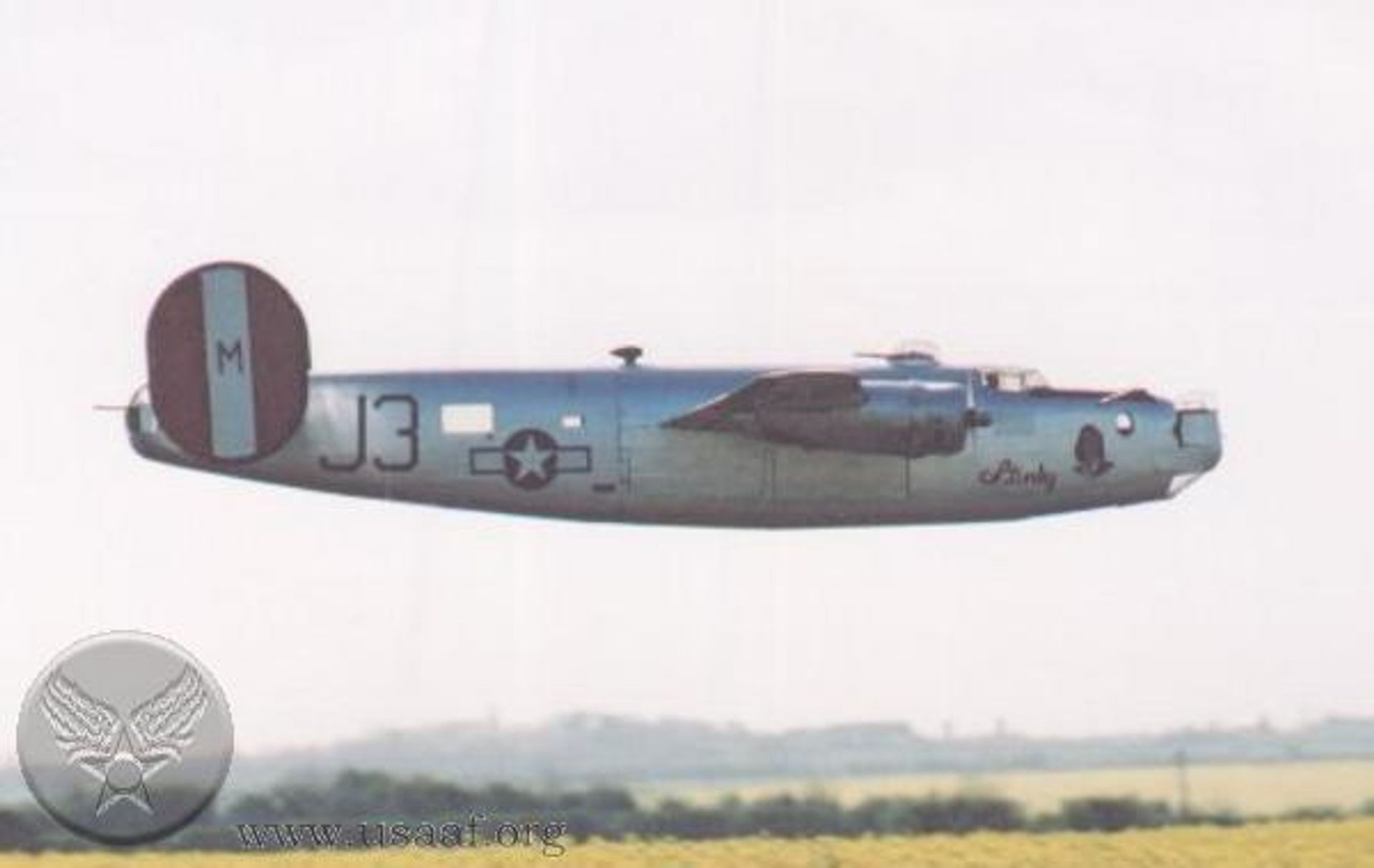
Sgt Don Neville – Gunner
Cpl’s Don Neville and Charles May (right) – New York City, 1944
On April 14, we were assigned our second mission. We were awakened around 3:30 a.m., and advised that a full crew was not required. The request was for the engineer, radio operator, and one gunner. This automatically included Seale and May, but we all wanted to go, so we drew cards, with high card the winner. I won, and immediately went to dress in flight clothes, have coffee and doughnuts, and attend the briefing. During the briefing we were told that our regular co-pilot would not be making the trip. A substitute with more combat experience would be taking his place. I didn’t get to talk with the new co-pilot, but I later learned that his name was Lt. Joseph J. Szoke.
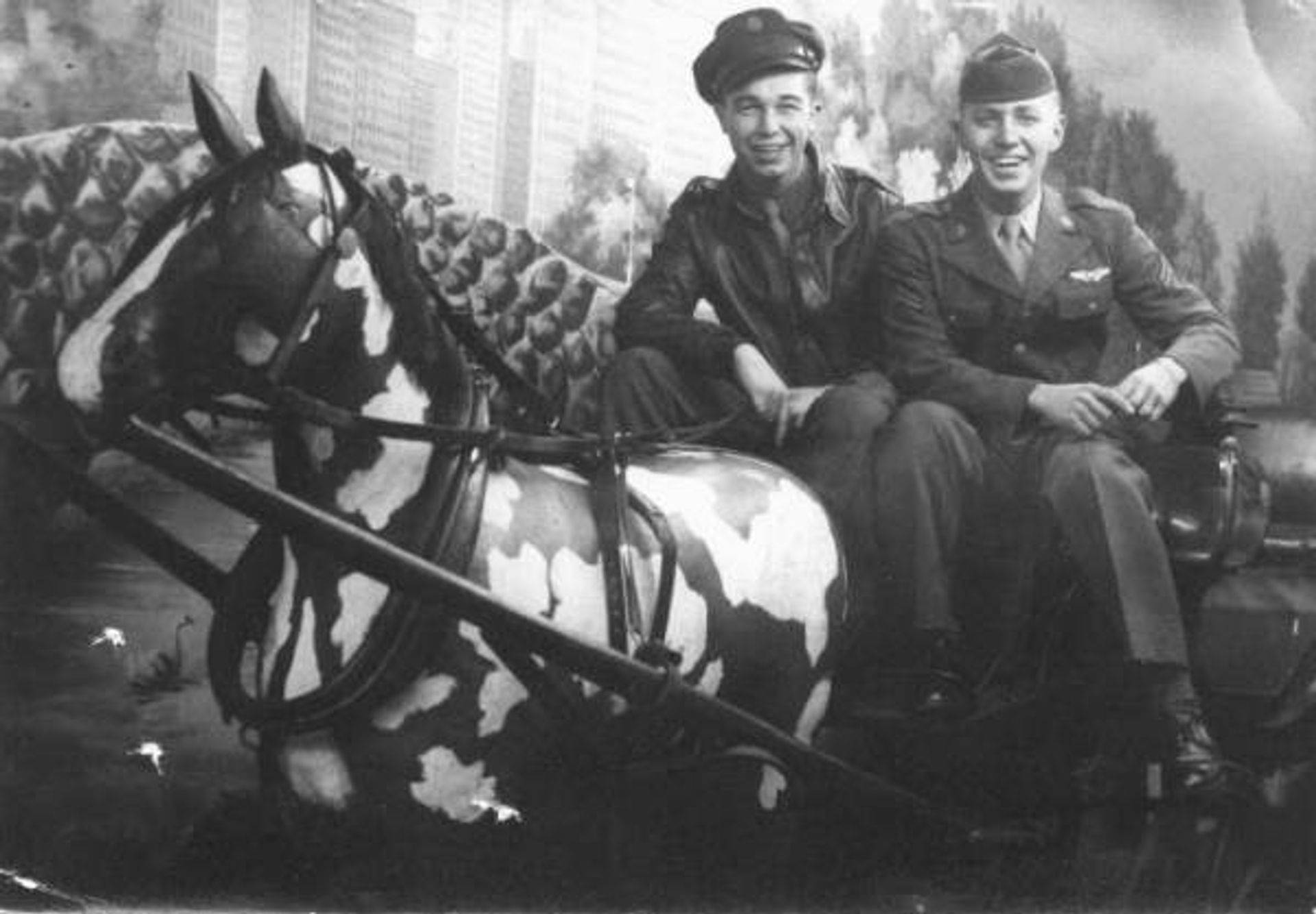
For takeoff, Lavonsky and I were located in the plane’s waist section. The rest of the crew was on the flight deck at the pilot’s compartment. The pilot called me on the intercom to ensure that everything was satisfactory in the rear of the aircraft. I reported everything secure, and that we were ready for takeoff. It was still dark and foggy when our clearance came. Each plane was taking off at 30-second intervals. A few minutes after becoming airborne, I noticed the inboard engine on the left side was “flaming” regularly, and did not appear to be running properly. I called the pilot several times on the intercom, but received no answer. The plane was having trouble gaining altitude, too. Our landing lights were still on, and I could see the tops of trees below.
Suddenly there was a flash and an explosion. I was thrown against the wall of the plane, and knocked unconscious. When I came to, I was lying on the ground on my back in a wooded area, surrounded by a large fire. The entire area had been drenched with aircraft fuel, and the fire was intense. Oxygen containers were exploding periodically in the fire, but I found myself unable to move. Various pieces of the plane were scattered all around me. One landing gear was sticking up in the air, the wheel still turning. I heard something moving close by, and discovered that it was Lavonsky. When I called to him, he crawled over and lay down beside me. Shortly afterward an English gentleman who lived nearby arrived and sat down next to us. He assured me that he’d stay until help arrived. He inquired about how many bombs we had on board. He said he’d only seen two, but none had exploded. He also placed something under my head for comfort, but I assure you, his presence alone was heaven-sent. I just knew my time was near. An English doctor arrived and gave me an injection to relieve the pain. An English volunteer fire department arrived and moved Lavonsky from the burning area using a ladder as a stretcher. As daylight approached, the fire subsided and sometime later an Army ambulance backed into the area. I smoked cigarettes and drank water while the medics attached a brace to my right leg and administered a blood transfusion. A large crowd gathered and shortly afterward I was placed in the ambulance and returned to the base.
At the base hospital I learned the sad fate of the other crew members. They had been killed instantly. Totten, Szoke, Anderson, Seale, and May. Only Lavonsky and I had survived. Official records state that a few minutes after takeoff, the aircraft struck some electrical wires about two miles north of the airfield in the village of Hainford, setting one engine on fire. Immediately after that, the ship collided with a tree and crashed into the ground, breaking up and catching fire. A Liberator that took off behind us crashed at about the same time at Spixworth, killing six of its crew members, leaving only one survivor. Several hours passed before I left for the 4210th US Army Hospital at Wymondham. Lavonsky was not seriously injured, so he was treated at the base hospital, where he required only a few weeks stay. I received a broken right leg, left ankle, left arm, several ribs, and several vertebrae. Three weeks later the war in Europe was over. Germany surrendered on May 7, 1945. The remaining members of my crew returned to the United States, while I spent the next two months in the hospital in traction.
Don Neville finally arrived home on July 20, 1945, but spent the next nine months in four different Army hospitals before being discharged.
Don Neville, from a November 2003 interview in RC Report (Courtesy: Don Neville)
Hookem Cow Wreckage
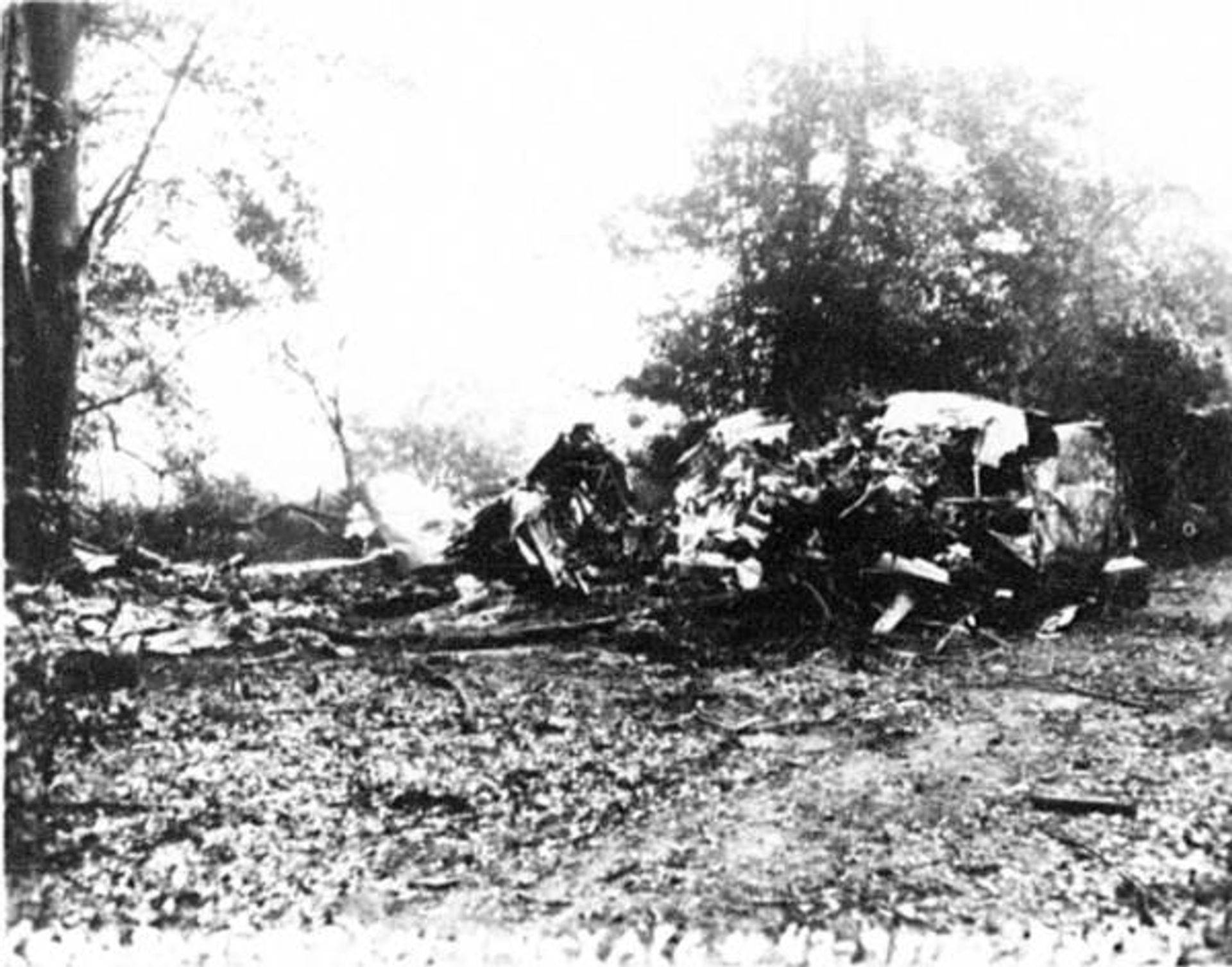
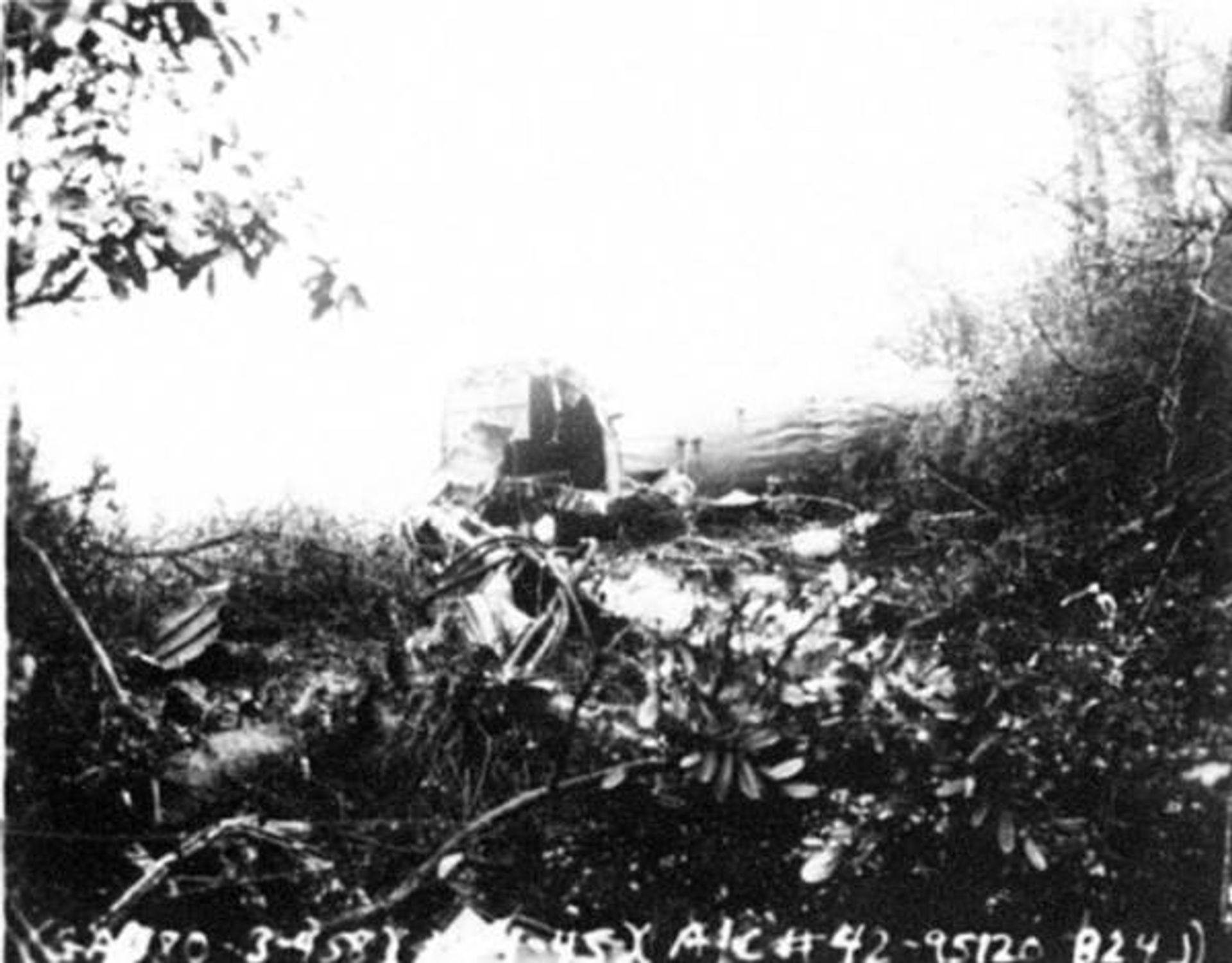
To the Rescue – English Style
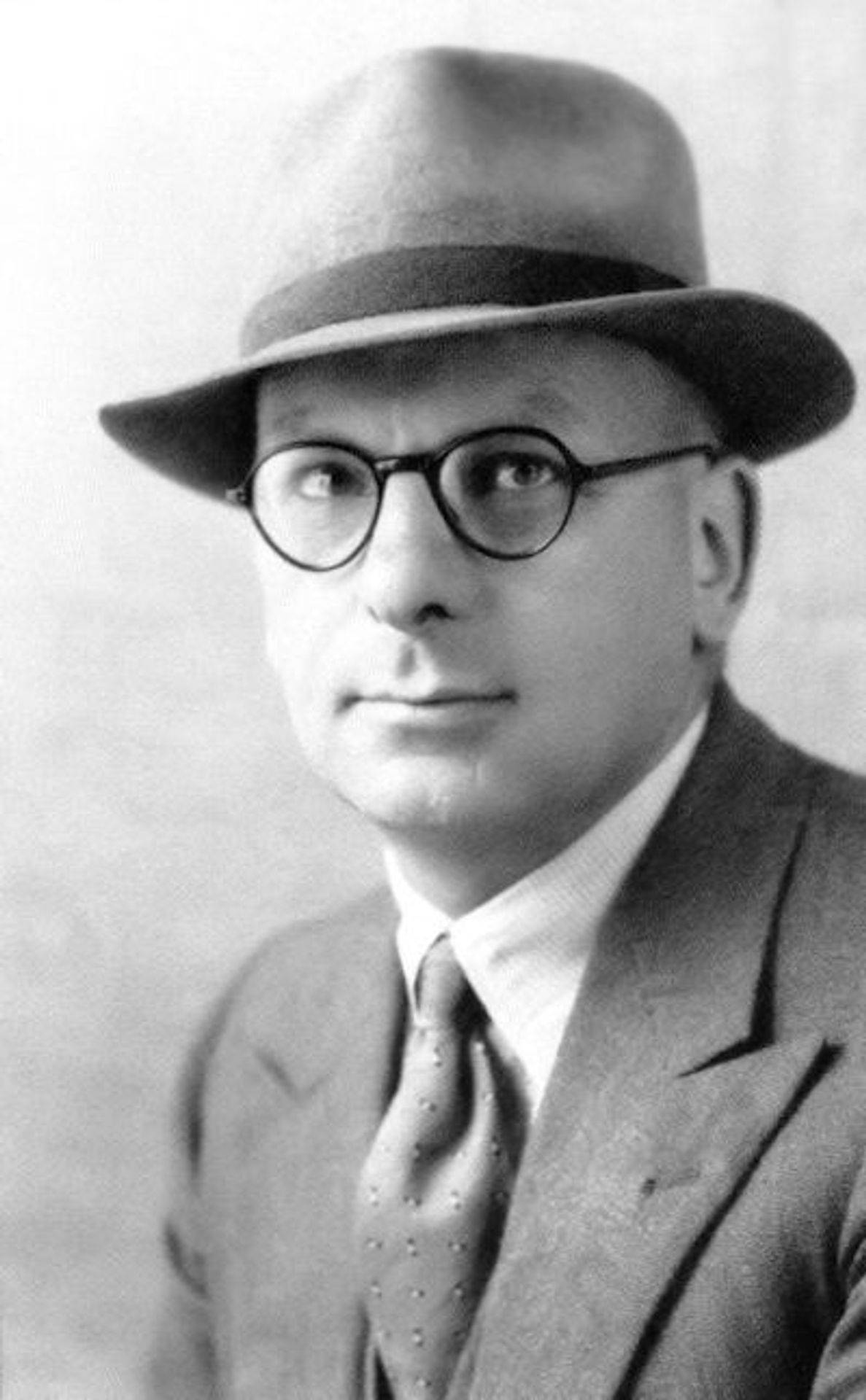
Those who have visited the Second Air Division Memorial Room in the Central Library at Norwich will no doubt recall seeing at the entrance to the room the fine painting, by English artist Mike Bailey, of a B-24 Liberator called Hookem Cow, but I wonder how many know the story of the tragic crash of this aircraft just six miles from where this painting can be seen.
This is how, on the 14th, April 1945, Mr. and Mrs. Walter Giles (left) and their family, living in a small village just outside Norwich, became involved with Hookem Cow and her crew of the 458th B.G., and were probably the last people to see this aircraft flying.
“Very early one morning, about 5 a.m. my wife and I were awakened by an aircraft passing so low over our house that I thought it had struck the roof. I jumped out of bed and looked out of the window, but could see nothing because of the darkness and thick fog. Shortly afterwards we heard another aircraft approaching and this time, quickly looking out of the window, I could see what looked like two lights coming through the darkness. These lights, we were later informed, were flames from the aircraft’s engines.
“Within seconds the aircraft hit the ground on our neighbor’s property with a tremendous crash. I shouted to my son in the next room, which also awakened my daughter, and we hurriedly dressed. Grabbing my son’s bicycle I rode off down the road with the two of them running close behind, but I had not gone more than a hundred yards when the wheel of my cycle struck something and I sprawled onto the ground. Upon recovery I noticed, by the light of a torch, that I had run headlong into a very large bomb which was lying in the road. A few feet further on was another bomb of similar size. Giving the torch to my daughter, I told her to sit on one of the bombs and warn any traffic that came along of the danger.
“My son and I carried on to what we could now see was quite a fire and we entered our neighbor’s gateway to find that the trees in front of his house were well alight and blocking our way. We then went back to the road to try and get behind the crashed aircraft and entered through a field gate further on. Running across the field we saw parts of aircraft strewn all around, and also the bodies of some of the crew, which I found most distressing.
“We thought that all on board had been killed, but on going closer to the flames we found a badly injured airman lying helpless on his back about fifteen feet away from the fire. He was conscious and as we knelt down to see if we could help him, another airman suddenly came staggering through the smoke saying, “Have we taken off yet?”. We realized he was suffering from concussion and I asked my son to lead him away from the fire and also endeavor to find something flat on which we could shift the badly injured man away from the flames, which were getting steadily closer.
“I knew that moving him with such serious injuries could have proved fatal so I stayed at his side as he asked me not to leave him or let him die. Just then my son returned with a door, but as the fire was now not so intense we decided not to move the airman, so we sat it out.
“While we waited for further help to arrive I asked our friend how many bombs were on the aircraft when it crashed. He replied that there were four, which made us wonder where the other two were besides the two we had already come across in the road.
“The wait seemed endless until the local doctor arrived and gave the injured airman an injection to relieve the pain, as by then he was not feeling too well. By the time the ambulance and American firefighting crews arrived the fire was dying down and our injured friend was taken away on a stretcher to the hospital.”
Meanwhile, back down the road, Mr. Giles’ daughter was still at her post. “As father had told me, I sat on one of the bombs with my torch at the ready. After only a few minutes one of our local air wardens came along and asked me what I was doing. “Sitting on a bomb”, was my reply. The same question was asked by my mother as she struggled down the road with blankets. It was a long and cold wait which seemed like eternity until the rescue services came.”
1978 2nd Air Division Journal account of Mr. W. A. Giles – by Chris Gotts (S.M.)
Recovering in Base Hospital

F/O Lavonsky (above) came through with a sprained back and minor cuts and bruises. Sgt. Neville (right) received a broken arm, broken leg, fractured ankle, sprained back, and minor cuts and bruises. The accident occurred on their second combat mission.
Photos: AFHRA
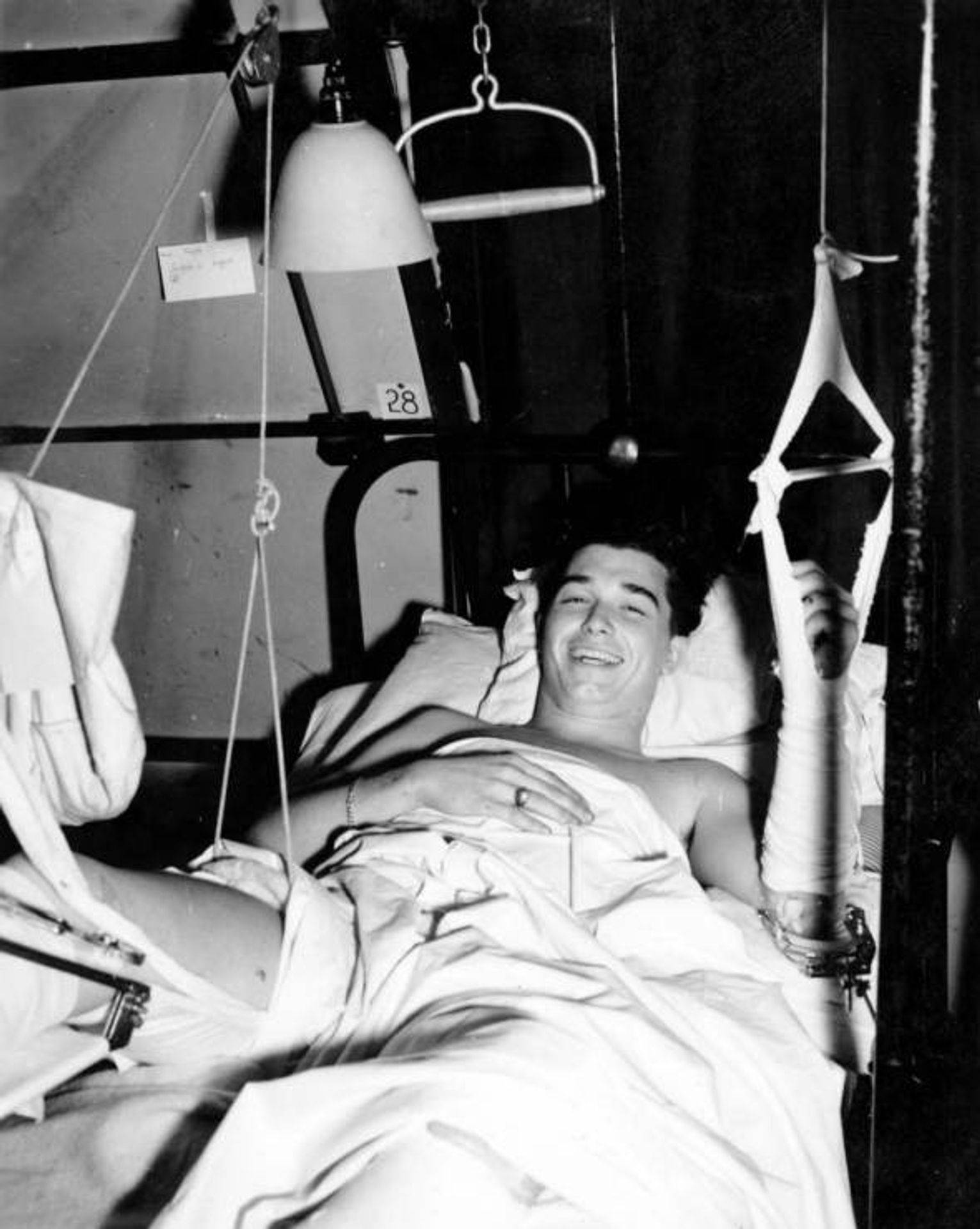
June 1945
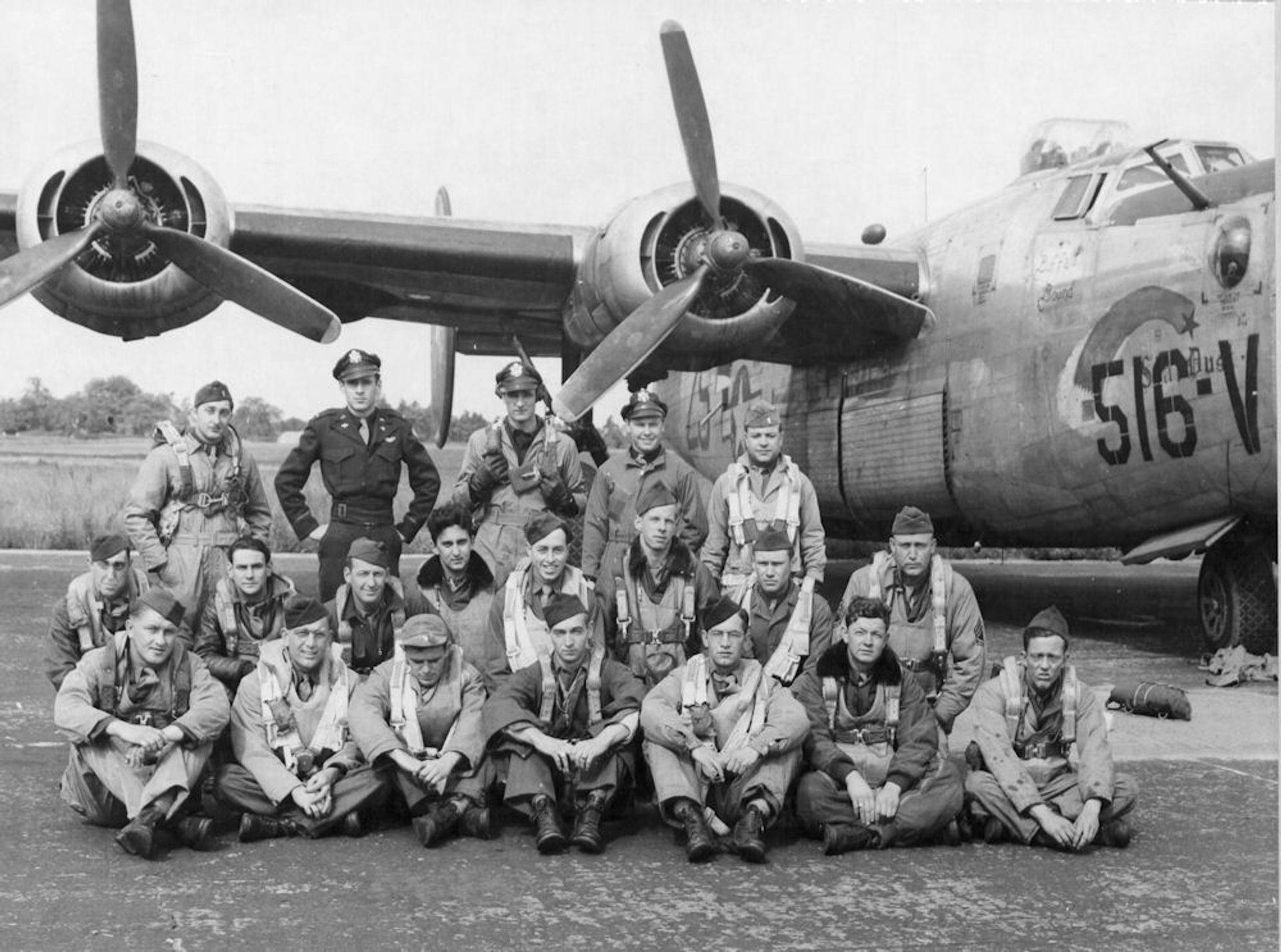
Sgt Charles E. May III – Maddingly Cemetery
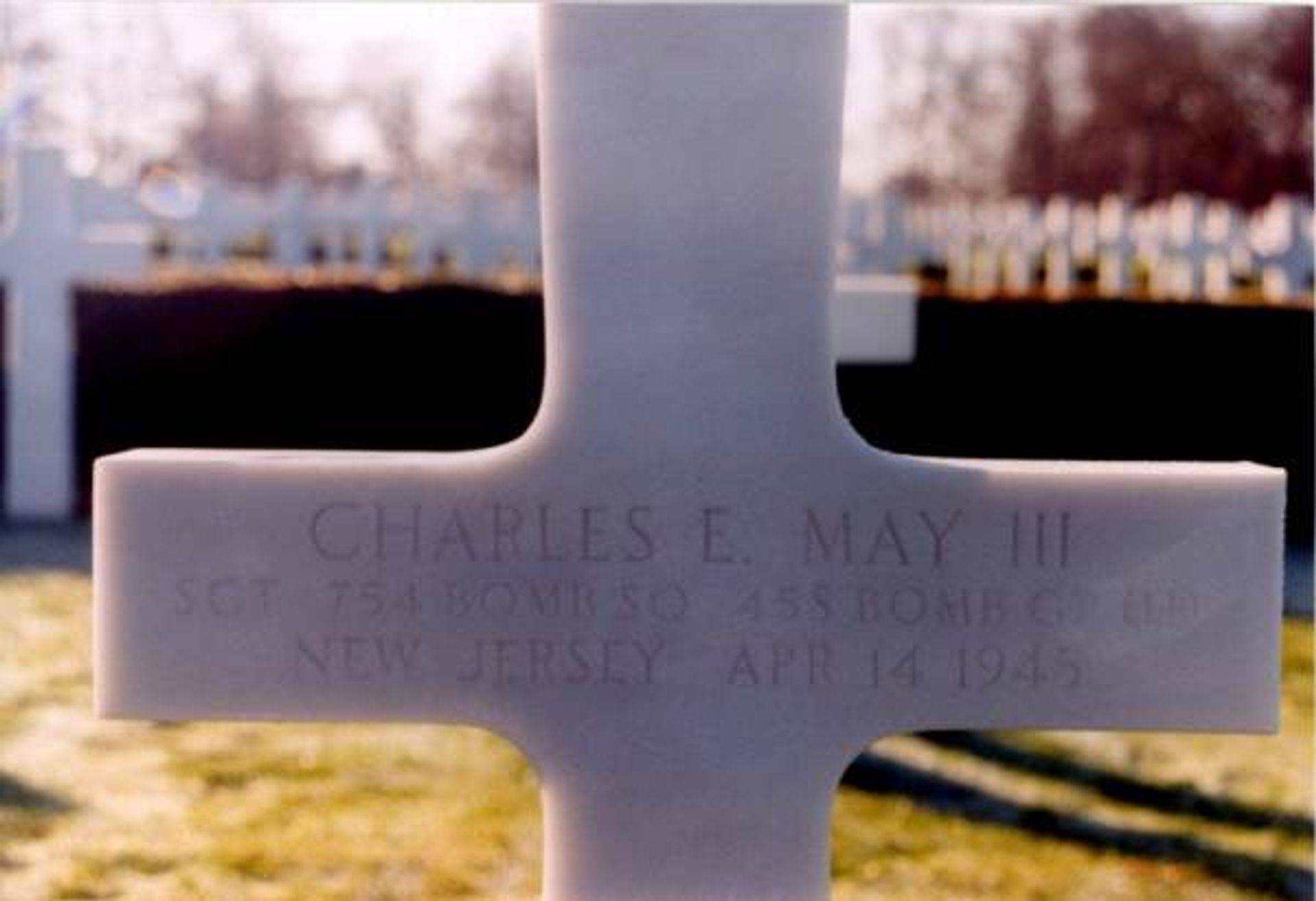
Hookem Cow Crash Site – beyond buildings between tall center trees
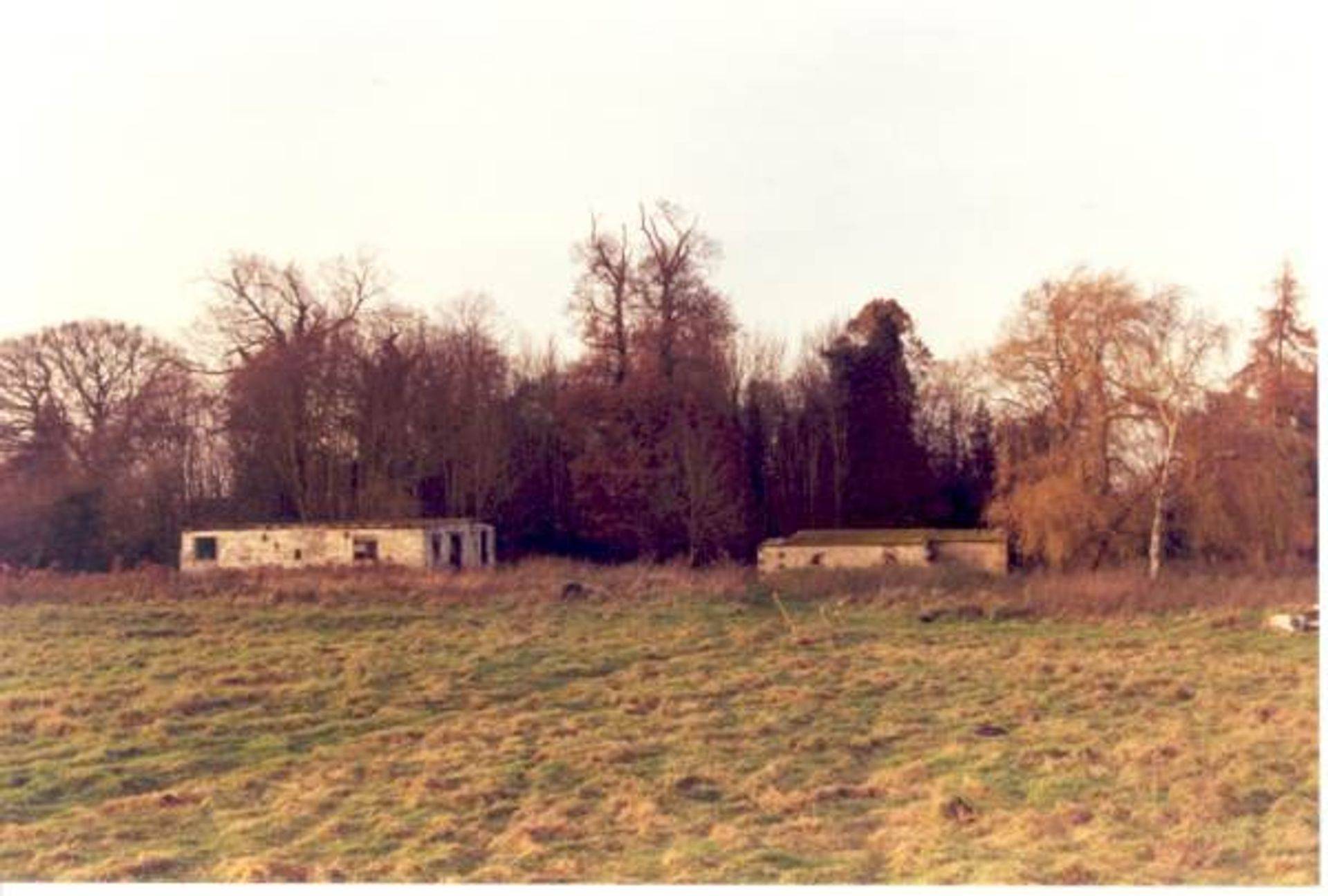
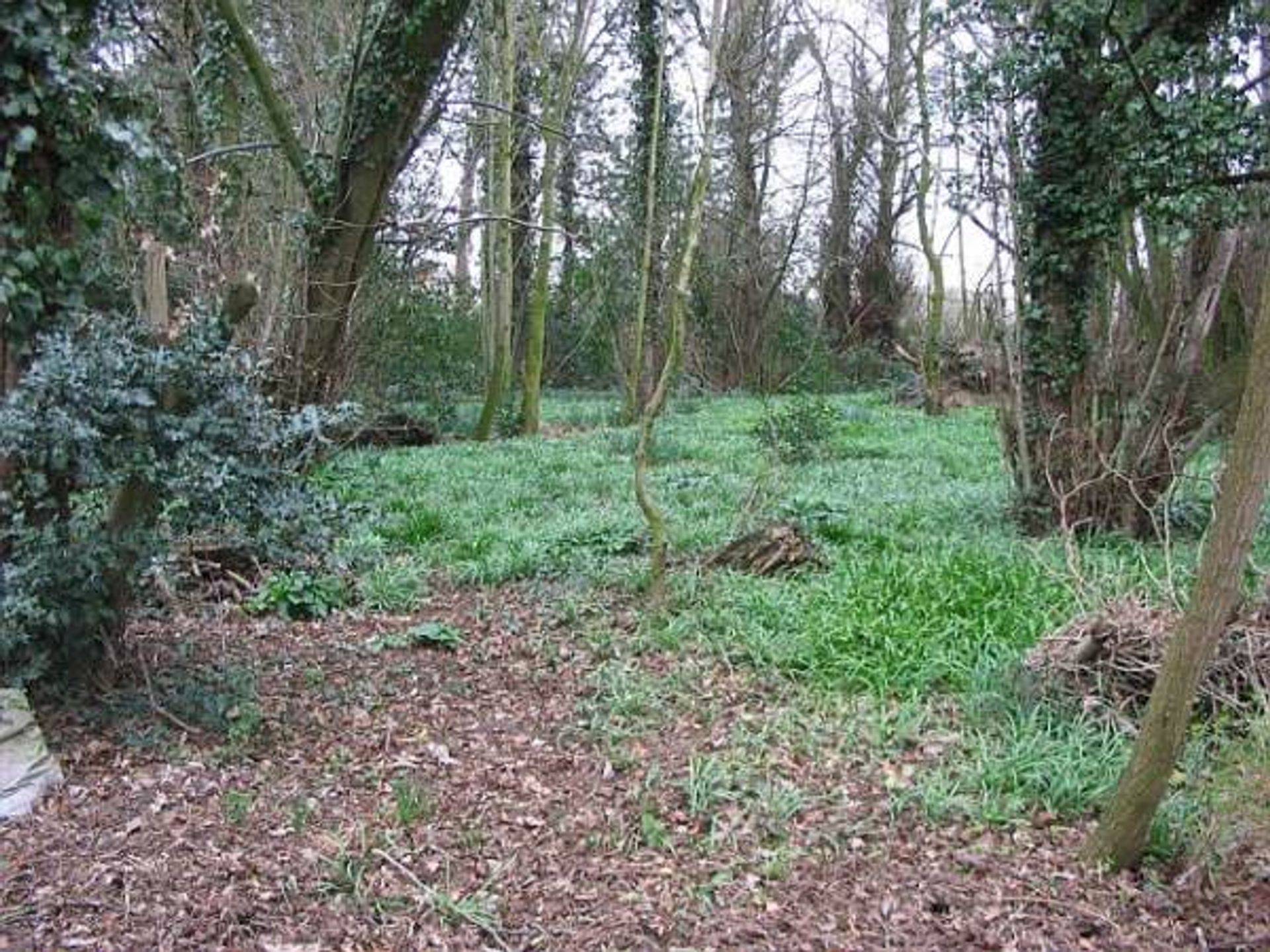
Photos: Trevor Hewitt
